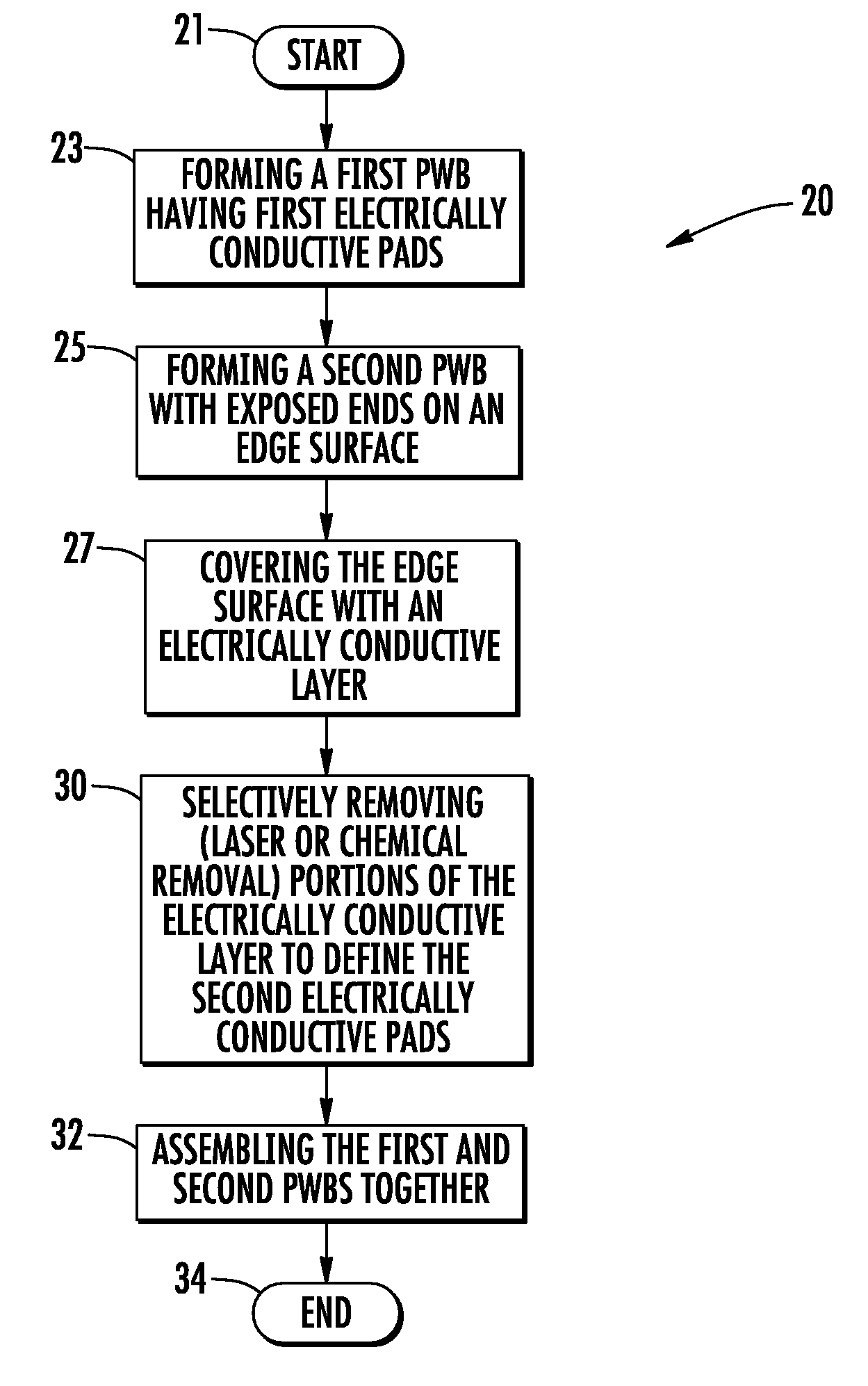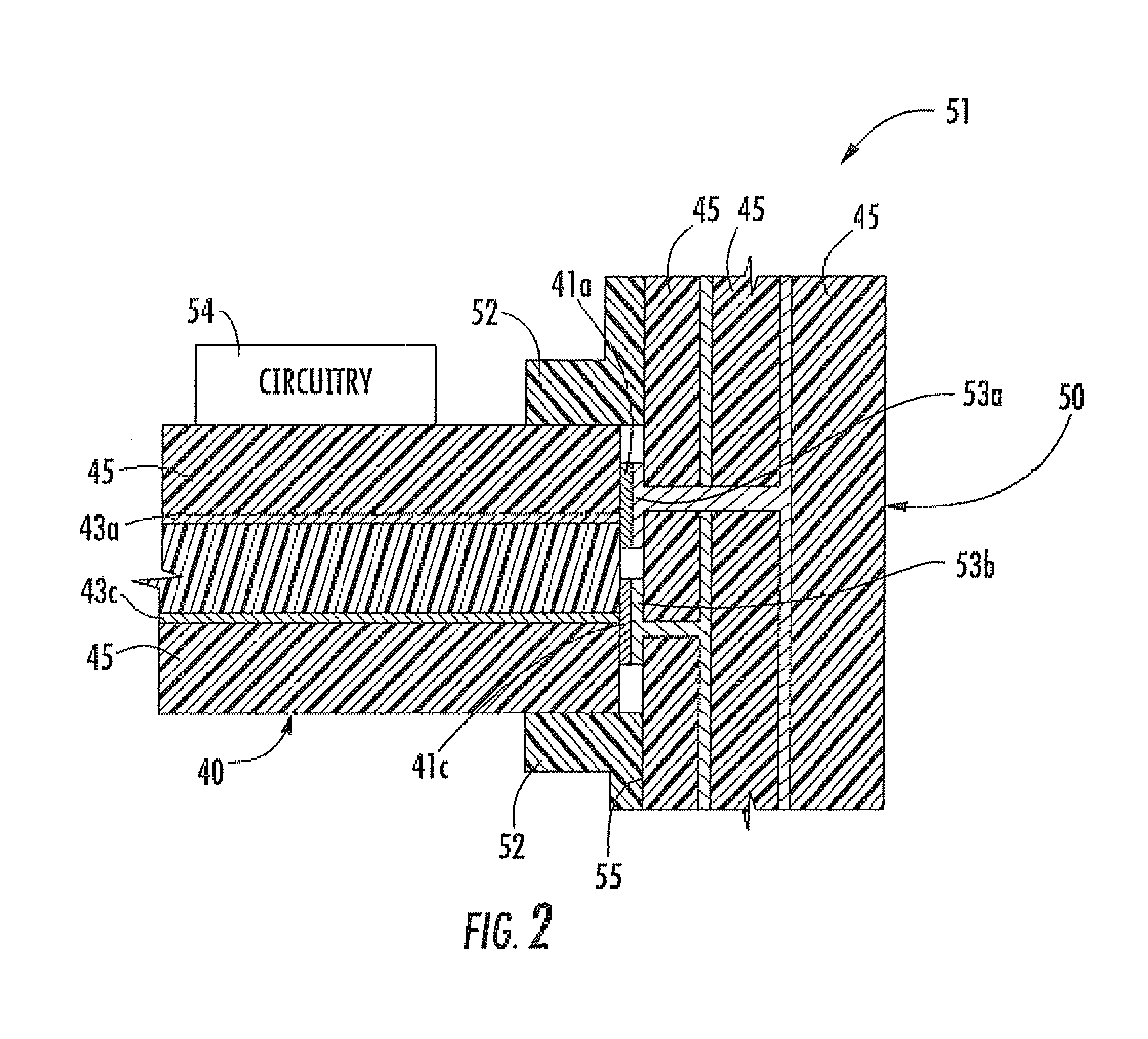Printed wiring board assembly and related methods
a printed wiring board and assembly technology, applied in the field of circuit boards, can solve the problems of increasing the size of assembled circuit boards, interconnecting circuit boards, installation drawbacks, etc., and achieve the effect of cost-effective and efficient manufacturing
- Summary
- Abstract
- Description
- Claims
- Application Information
AI Technical Summary
Benefits of technology
Problems solved by technology
Method used
Image
Examples
Embodiment Construction
[0019]The present invention will now be described more fully hereinafter with reference to the accompanying drawings, in which preferred embodiments of the invention are shown. This invention may, however, be embodied in many different forms and should not be construed as limited to the embodiments set forth herein. Rather, these embodiments are provided so that this disclosure will be thorough and complete, and will fully convey the scope of the invention to those skilled in the art. Like numbers refer to like elements throughout, and multiple prime notation is used to indicate similar elements in alternative embodiments.
[0020]Referring initially to FIGS. 1-3, a flowchart 20 illustrates a method for making a printed wiring board (PWB) assembly 51 that begins at Block 21. The method illustratively includes at Block 23 forming a first PWB 50 having a plurality of first electrically conductive pads 53a-53d. The first electrically conductive pads 53a-53d (only two of which are visible ...
PUM
| Property | Measurement | Unit |
|---|---|---|
| electrically conductive | aaaaa | aaaaa |
| width | aaaaa | aaaaa |
| planar shape | aaaaa | aaaaa |
Abstract
Description
Claims
Application Information
 Login to View More
Login to View More - R&D
- Intellectual Property
- Life Sciences
- Materials
- Tech Scout
- Unparalleled Data Quality
- Higher Quality Content
- 60% Fewer Hallucinations
Browse by: Latest US Patents, China's latest patents, Technical Efficacy Thesaurus, Application Domain, Technology Topic, Popular Technical Reports.
© 2025 PatSnap. All rights reserved.Legal|Privacy policy|Modern Slavery Act Transparency Statement|Sitemap|About US| Contact US: help@patsnap.com



